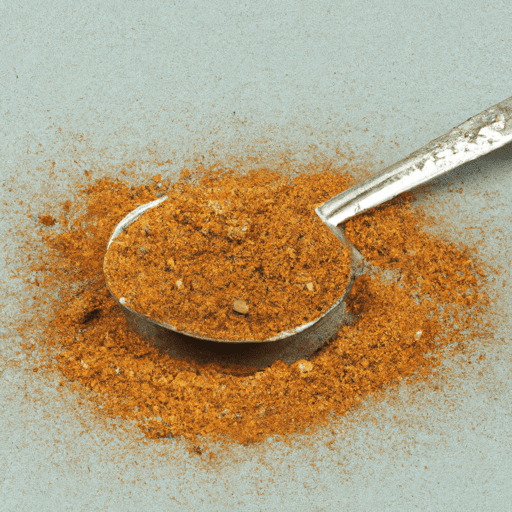Baharat Spice Mix: Bursting with Flavors from the Middle East
If you enjoy the delicious tastes and aromas of Middle Eastern cuisine, then you definitely need to get acquainted with baharat spice mix. With its warm and bold flavors, baharat is a versatile blend that adds an exotic touch to your dishes. In this blog post, we’ll explore the unique characteristics, common uses, nutritional benefits, and fascinating history of this amazing spice mix.
Taste and Aromas:
Baharat spice mix, which translates to “spice” or “blend” in Arabic, is a staple in Middle Eastern cooking. This fragrant and complex blend is known for its alluring combination of sweet, spicy, and earthy flavors. The taste profile typically includes notes of cumin, coriander, cardamom, cloves, black pepper, paprika, cinnamon, and nutmeg. These spices come together to create an irresistible flavor that is simultaneously warm, rich, and slightly sweet.
Common Uses:
Baharat is a versatile spice mix that can be used in various dishes, ranging from hearty stews to grilled meats and everything in between. Here are some popular ways to incorporate baharat into your cooking:
1. Meat Seasoning:
Baharat works wonders as a rub or marinade for meats, giving them a vibrant and fragrant coating. Whether you’re grilling, roasting, or pan-frying, baharat adds a delightful depth to beef, lamb, chicken, or even fish.
2. Rice and Grain Dishes:
Liven up your rice and grain dishes by adding a pinch of baharat. It adds a delightful warmth and complexity to pilafs, biryanis, and couscous.
3. Vegetable Tagines and Soups:
In Middle Eastern cuisine, baharat is often used to enhance the flavor of vegetable-based dishes such as tagines and soups. It infuses a captivating aroma and taste into dishes like lentil soups, roasted vegetables, or stuffed bell peppers.
4. Dips and Sauces:
You can add a Middle Eastern flair to your dips and sauces by incorporating baharat. Whether you’re preparing a creamy yogurt dip or a tangy tahini sauce, baharat will take them to the next level.
Nutritional Benefits:
Besides its delicious flavors, baharat also offers some nutritional benefits. Many of the spices found in baharat, such as cumin, coriander, and cinnamon, are known to have antioxidant and anti-inflammatory properties. Additionally, they may help improve digestion and boost metabolism. However, it’s important to note that since baharat is typically used in small amounts, its nutritional impact may be relatively minor compared to a well-balanced diet.
History and Interesting Facts:
Baharat has a rich history that spans centuries and can vary from region to region. It is believed to have originated in the Arabian Peninsula and is commonly used across the Middle East. While the exact recipe for baharat can differ, it is generally composed of the spices that best represent the flavors of the region.
One interesting fact is that baharat can be found in various cuisines beyond the Middle East. It is often used in Turkish, Persian, and North African cooking, albeit with slight regional tweaks. This widespread usage can be attributed to the influence of trade routes and historical interactions between different cultures.
: If you want to add a touch of Middle Eastern magic to your culinary creations, baharat spice mix is an essential ingredient to have in your pantry. Its enchanting blend of spices brings warmth and complexity to a wide range of dishes. Whether you’re a meat lover, a vegetarian, or simply curious about exploring new flavors, baharat will open up a world of exciting taste sensations. So go ahead, sprinkle it, rub it, and let the enticing flavors of baharat transport you to the vibrant streets of the Middle East!
Baharat Spice Mix
Origin: Baharat is a spice blend commonly used in Middle Eastern and Mediterranean cuisine. The word “baharat” translates to “spices” in Arabic, and the blend itself is believed to have originated in the Arabian Peninsula. However, it has become popular throughout the region and is now used in various countries, including Turkey, Jordan, Syria, Lebanon, and Israel.
Common Uses: Baharat spice mix is highly versatile and adds depth and warmth to savory dishes. It typically includes a combination of spices such as black pepper, paprika, cumin, coriander, cinnamon, cloves, nutmeg, and cardamom. This aromatic blend is often used to season meat, poultry, and seafood before grilling or roasting. It is also used to flavor stews, soups, rice dishes, and vegetable preparations. Additionally, baharat can be used as a dry rub or as a seasoning for marinades.
Nutritional Benefits: The nutritional benefits of baharat spice mix vary depending on the specific spices used and the quantity consumed. However, many of the individual spices commonly found in baharat have potential health benefits. For example, cumin may aid digestion, black pepper may improve nutrient absorption, and cinnamon may help regulate blood sugar levels. It’s important to note that the amounts typically used in spice blends are relatively small, so the nutritional impact of baharat itself may be limited.
Unique Properties and Historical Significance: Baharat spice mix is known for its warm and complex flavor profile, thanks to the combination of multiple spices. The specific proportions of each spice may vary depending on the region or personal preference. In addition to its culinary uses, baharat also holds historical significance in the Middle East. It has been a staple in traditional recipes for generations, reflecting the rich culinary heritage of the region. The exact composition and preparation methods of baharat can vary from household to household, creating a unique blend for each cook.




Use the share button below if you liked it.
It makes me smile, when I see it.